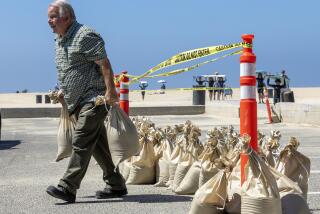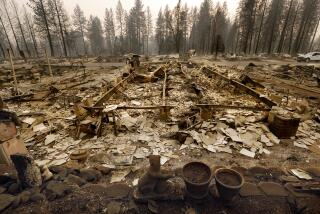Internet connected loved ones after Boston bombings
With cellular service in Boston jammed in the aftermath of the marathon explosions this week, many people were left scrambling for ways to let loved ones know they were safe and to search for information on family and friends.
Social networks and other websites became the go-to solutions in many cases, as scores of people posted updates saying they were unharmed and offering firsthand accounts and photographs from the scene. Because the Internet wasn’t affected, Boston residents used Facebook and Twitter to reach out to large numbers of people at once; they also turned to Apple Inc.’s iMessage, Skype and Google Inc.’s Voice.
Christina Feng was working as a surgery resident at a nearby hospital when the Boston explosions occurred. For half an hour, she tried in vain to call friends and family on her cellphone.
“It just wouldn’t connect,” the 27-year-old said. “Everybody was either texting their friends or posting really quickly on Facebook. That was really the only way to communicate with people at the time.”
Because Internet access is so ubiquitous now and less likely to become disrupted, safety officials and emergency preparedness experts are encouraging the use of such Web services in the immediate wake of a major disaster, such as an earthquake in California. Land-line phone calls, they say, should be saved for emergency situations during periods of heavy cellphone traffic.
“Calls get backed up, everybody’s trying to call at once. Tweets are a lot faster,” said Murray Jennex, a professor at San Diego State who has researched ways people use social media to summon help, disburse information and reconnect after a disaster or terrorist attack.
Once close friends and family have been notified, there’s another step people can take to officially say “I’m safe” — by registering on one or more online people registries.
After Hurricane Katrina, the American Red Cross partnered with Microsoft Corp. to create Safe and Well, a website used during disasters and other emergency situations. Survivors list themselves as unharmed and write a brief message, which can be automatically posted to their Twitter and Facebook profiles. People can search the database for registrants.
A Boston-specific Safe and Well database was set up this week and more than 500 people have registered, said Katherine Galifianakis, director of mass care at the American Red Cross.
“We had an enormous amount of traffic in the first few hours where we had to work with the builder of the site to increase the capacity,” she said.
Such lists also help law enforcement and local governments after a disaster. The Red Cross says its Safe and Well database has been used by officials in the past to cross-check against lists of people missing.
Google offers a similar service, called Person Finder. Its crisis response team created the Person Finder Web application to help people post and search for the status of relatives or friends affected by a disaster.
The Person Finder tool was used after the 2010 Haiti earthquake and the 2011 Japan earthquake and tsunami, and a page was set up Monday after the Boston Marathon explosions.
Person Finder enables people to subscribe to status updates, delivered via email, on a specific person.
“We intend for each Google Person Finder repository to be up for a limited time,” the company said on its website. “After the immediate crisis has passed and more usual forms of communication are able to serve the need, we take down the Google Person Finder repository, and delete the data in accordance with our privacy policy.”
More to Read
Inside the business of entertainment
The Wide Shot brings you news, analysis and insights on everything from streaming wars to production — and what it all means for the future.
You may occasionally receive promotional content from the Los Angeles Times.









